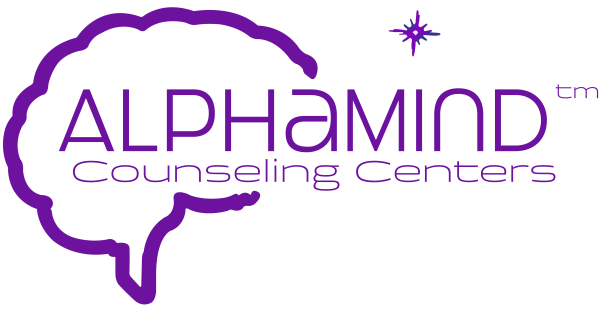At first glance, there may seem to be very few differences between brainspotting and EMDR therapies. However, they do have a few key differences that make them separate treatment options. Diving into a new treatment can seem daunting when you do not know much about it, however, neither brainspotting nor EMDR therapy should intimidate you! Any therapist you choose to work with will be able to walk you through the process and only push you as far as you are comfortable. If you are looking for the answers regarding the similarities and differences between brainspotting and EMDR therapies, you have come to the right place – AlphaMind Brain Centers has all the information to fill you in on what you need to know. Keep reading to find out.
What is Brainspotting?
Brainspotting is a type of therapy developed from EMDR. A well known therapist named David Grand discovered the treatment in 2003. Essentially, through brainspotting, the therapist finds things called brainspots. These are eye positions that correlate to certain emotional responses. Once the brainspot is detected, the therapist and client work together to allow the client’s brain to continue to process the event fully. It typically does not overstimulate the client, and individuals can speak as much or as little as they wish.
Brainspotting is typically thought to work faster than EMDR treatment.
What is EMDR?
EMDR therapy stands for Eye Movement Desensitization and Reprocessing, and it has been around since the 1980’s. It has been researched extensively and is proven to be an effective psychotherapy treatment. EMDR assists in helping people recover from trauma and conditions like PTSD, anxiety, depression, and panic disorders.
EMDR differs from many therapeutic treatments in the sense that it does not require extensive discussions regarding the traumatic subject. We offer EMDR services here at Alpha Mind and are happy to get you started on this treatment.
Similarities Between the Two
Brainspotting and EMDR therapies are exceptionally similar. Let’s look at a few of the similarities between the two treatment options.
They Treat Similar Conditions
Since brainspotting was developed from EMDR, they treat similar conditions. Trauma is the biggest focus, however, they touch upon other topics:
- Anxiety
- Depression
- ADD & ADHD
- Concussions
- Grief
- PTSD
- Insomnia
- Memory Loss
- Stress
- And many other conditions!
These are not the only conditions that EMDR and brainspotting can treat. If you’re interested in knowing whether or not EMDR or brainspotting can treat a different condition, feel free to reach out to us here at Alpha Mind Counseling Centers!
They Use Bilateral Stimulation
Bilateral stimulation regards the stimulation of both sides of the body. For both of these therapies, they use alternating stimulation. This includes exercises such as the movement of the eyes, paddles that buzz in the client’s hands, bilateral sounds, amongst other things.
They Utilize Eye Movement
Both therapies work using eye movements. However, they differ in the way that they examine and utilize eye movement, which we will touch upon shortly.
They Pay Attention to Sensations / Emotions
Another similarity is that for either treatment, the therapist will pay attention to the thoughts, memories, emotions, and physical sensations of the clients. The therapist will often ask about these things to make sure they have a complete understanding of what is happening with their client. This allows them to assist accordingly.
Grounding Techniques and Protocol
Because of the nature of the therapy, therapists have grounding techniques to ensure the best possible experience for the client. In addition to the grounding techniques and available resources, the session will begin with some sort of protocol or set up; on a broad scale, both will discuss the physical and mental feelings of the client before beginning. This way, they can gauge the distress of the individual properly.
Differences Between the Two
While brainspotting and EMDR have many similarities, they do have differences to distinguish between the two.
Different Focuses on Eye Movements
With EMDR, the client will move their eyes from side to side at the guidance of the therapist. With brainspotting, this is not the case. It focuses more on the position of the eyes in order to detect a brain spot. Sometimes, brainspotting can be referred to as “mindful focusing.”
They Use Different Tools
When you attend EMDR therapy, the therapist will most likely use a light bar, their own fingers, tappers, and bilateral sounds. With brainspotting, they will likely utilize headphones, biolateral sounds, or a pointer. While the products may be similar, they are used in different manners.
Their Setups and Protocols Differ
EMDR has a much stricter and slightly longer protocol than brainspotting, which is a bit more flexible. The questions asked in brainspotting are an attempt to help the client shift their focus from their thinking brain to the deeper, more unconscious side of their brain. This setup is not driven by rules, like with EMDR.
Contact AlphaMind Brain Centers
Now that you know the difference between EMDR and brainspotting, you can work with a therapist to decide which one will benefit you the most. Here at AlphaMind Brain Centers in Cary, North Carolina, we are able to get you connected with one of our staff members to get you started on treatment. If you have any questions, we are happy to answer them for you. Feel free to fill out the contact form or give us a call so we can get you started on your preferred treatment. We look forward to hearing from you soon.

